
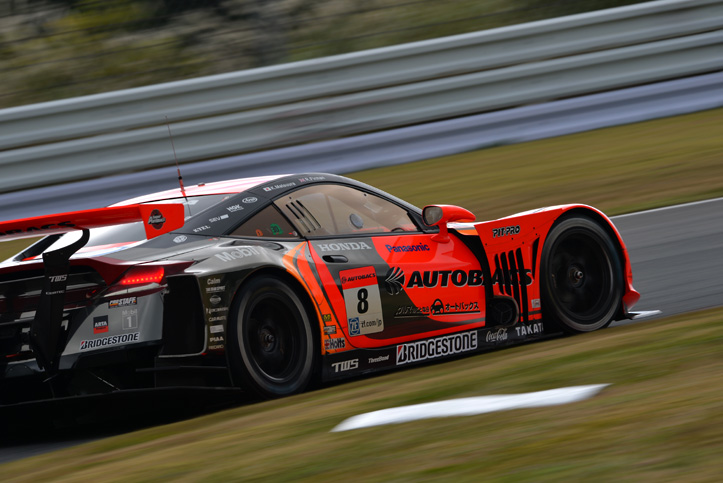
OFF SEASON SPECIAL -2-
This exercise of looking back the SUPER GT cars before the 2014 season start is seeing its second edition. This edition will shed light on Honda’s HSV-010 GT.
HSV-010 GT in 2013 wrapped up the season with a pretty good result, obtaining the second position in the drivers ranking (No.17 KEIHIN HSV-010) with three wins out of eight races overall including a win at the season opener at Okayama (No.100 RAYBRIG HSV-010).
In terms of the car, the inside changed more than what it looked outside from the 2012-model. Location of the radiator was put back to the front area, where it used to be in its debut year of 2010, from the side area, which the manufacturer tried in 2011 and 2012. It has been said that with the change the sensitive setting of the car in 2012 had eased off and became more stable. Along with that, the manufacturer had done many trials and tests on the exhaust piping and aerodynamics from the pre-season tests up to around Round 3, causing the four cars to have slight differences in how each looked at the opening round. However, a standard form of the 2013-model HSV-010 GT was defined by the Round 4 and beyond, which enabled all the cars to be the same except the setting.
Exhaust pipe
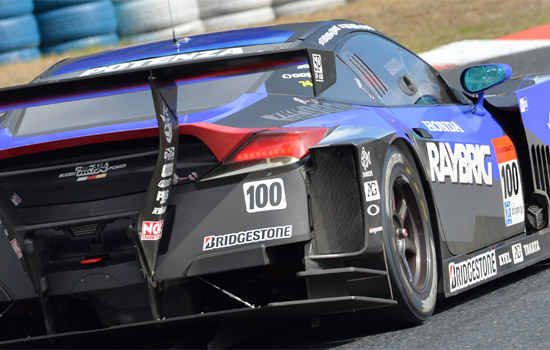
Rd.1 OKAYAMA No.100 RAYBRIG HSV-010
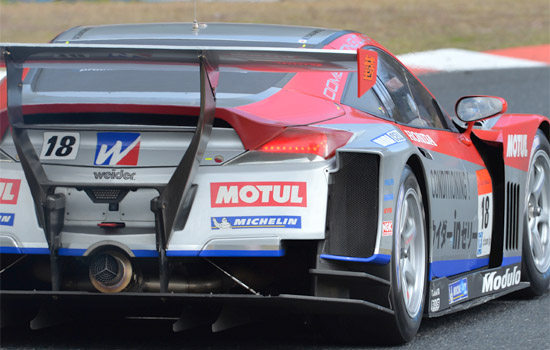
Rd.1 OKAYAMA No.18 Weider Modulo HSV-010
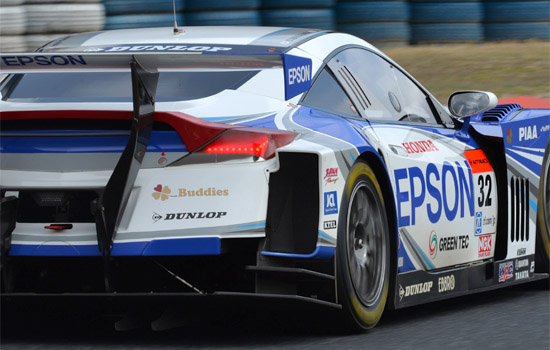
Rd.1 OKAYAMA No.32 Epson HSV-010
Side exhaust set at behind the front wheel was the standard of 2013-model HSV-010 GT. But No.18 Weider Modulo HSV-010 continued with a single exhaust at rear since the team decided not to make many changes so the data comparison against the previous year would be more effective since the team switched its tires to Michelin from the year. No.32 Epson HSV-010 adopted the side exhaust, but at the season opener its exhaust opening was located just below the door. After the first round, all cars adopted the side exhaust located at the back part of front fender (No.100 RAYBRIG HSV-010), which was more effective in aerodynamics. It was interesting that a round opening was created in between the rear wing stays even after the side exhaust was adopted so that a single exhaust can also be installed.
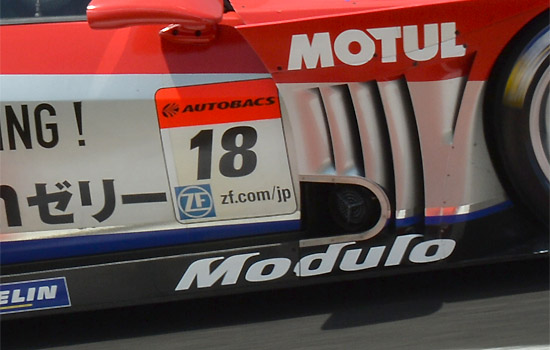
Rd.5 SUZUKA No.18 Weider Modulo HSV-010
Front fender
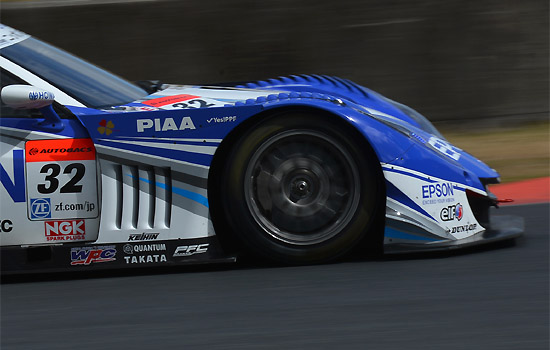
Rd.1 OKAYAMA No.32 Epson HSV-010
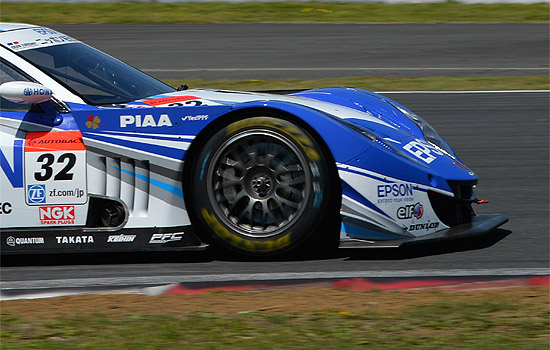
Rd.2 FUJI No.32 Epson HSV-010
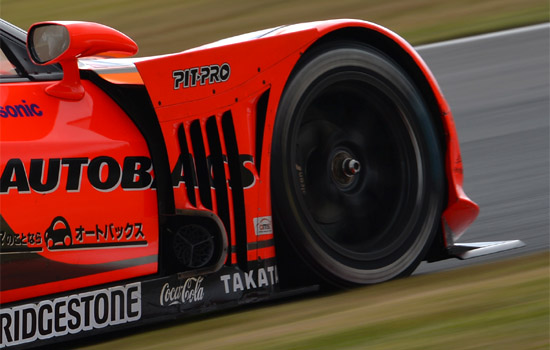
Rd.7 AUTOPOLIS No.8 ARTA HSV-010
With the change in location of exhaust outlet, No.32 Epson HSV-010 also changed the shape of slits located at the back of front tires, on the side of front fender. Some teams used a fender with diagonal slits at behind the tire as well as the one without the slits (There were slits on ARTA HSV-010 at Round 7).
Slits located above the tires for letting the air out were changed between the Round 1 Okayama, a technical track, and the Round 2 Fuji, a high-speed track. At the final round Motegi, the fenders without the slits, similar to those used at Okayama, were used as the race was held on a technical circuit.
Front mirror
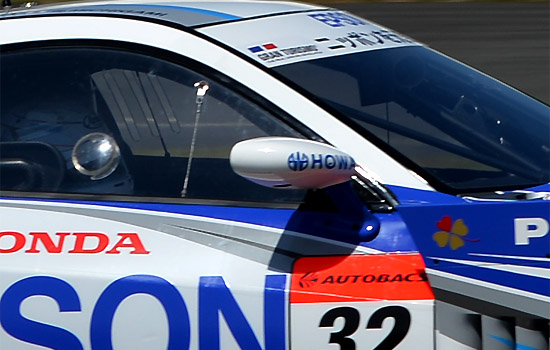
Rd.2 FUJI No.32 Epson HSV-010
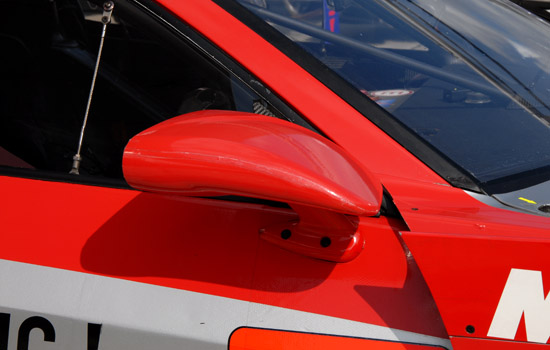
Rd.5 SUZUKA No.8 ARTA HSV-010
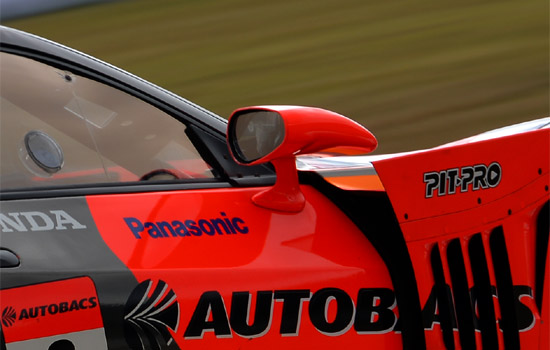
Rd.7 AUTOPOLIS No.8 ARTA HSV-010
Front mirror looked like a cannonball at the season opener, but in the mid-season its profile changed to what it looked like bird’s beak. It was indeed an outcome of manufacturer’s attitude to pursuit the better even for a slight efficiency via aerodynamics testing.
Rear wing & stay
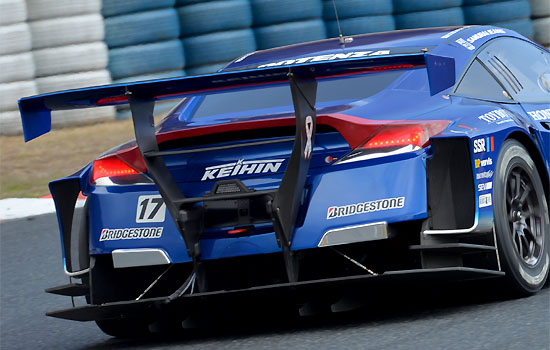
Rd.1 OKAYAMA No.17 KEIHIN HSV-010
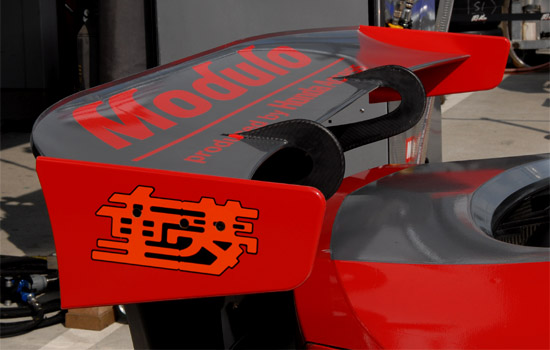
Rd.5 SUZUKA No.18 Weider Modulo HSV-010
At the season opener, the stay supported the wing from underneath, but after the Round 3 it was changed to a “Swan neck” type which hanged the wing from above. The shape of rear wing was also changed a bit along with the change in the stay.
Side view
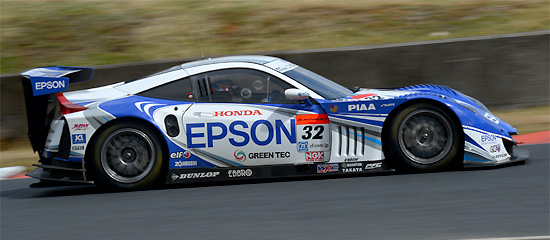
Rd.1 OKAYAMA No.32 Epson HSV-010
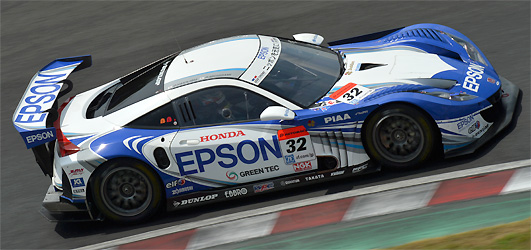
Rd.5 SUZUKA No.32 Epson HSV-010
Pictures compare No.32 Epson HSV-010 between the season opener at Okayama and Round 5 Suzuka. No.32 car was probably the car with most changes. Can you find the difference?
| 4/13-14 | Round1 OKAYAMA | |
| 5/03-04 | Round2 FUJI | |
| 6/01-02 | Round3 SUZUKA | |
| 8/03-04 | Round4 FUJI | |
| 9/21-22 | Round6 SUGO | |
| 10/19-20 | Round7 AUTOPOLIS | |
| 11/02-03 | Round8 MOTEGI | |
| 12/07-08 | Round5 SUZUKA |